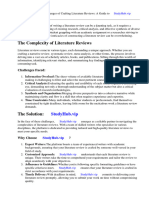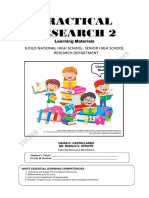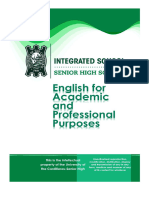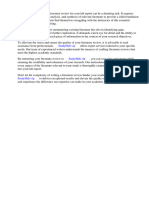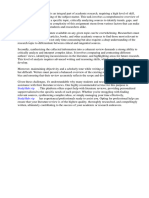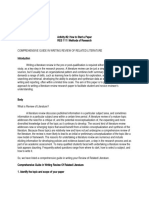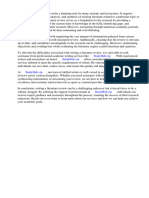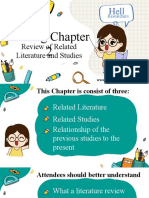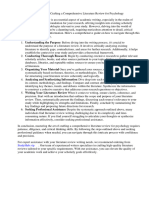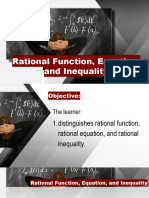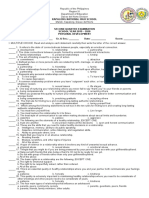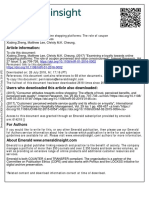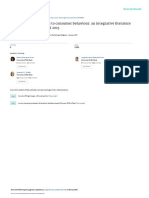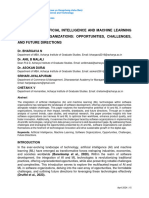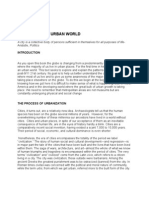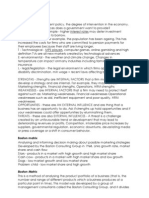0% found this document useful (0 votes)
28 views12 pagesChapter II How To Write The RRL
Chapter II discusses the importance of a Review of Related Literature (RRL) in research, outlining its role in providing context and identifying gaps in existing studies. It offers a step-by-step guide on creating an effective RRL, including defining the research topic, searching for relevant literature, evaluating sources, organizing by themes, synthesizing information, and proper citation. An example is provided, illustrating how to structure an RRL on the impact of social media on academic performance.
Uploaded by
viacarissereprado19Copyright
© © All Rights Reserved
We take content rights seriously. If you suspect this is your content, claim it here.
Available Formats
Download as PPTX, PDF, TXT or read online on Scribd
0% found this document useful (0 votes)
28 views12 pagesChapter II How To Write The RRL
Chapter II discusses the importance of a Review of Related Literature (RRL) in research, outlining its role in providing context and identifying gaps in existing studies. It offers a step-by-step guide on creating an effective RRL, including defining the research topic, searching for relevant literature, evaluating sources, organizing by themes, synthesizing information, and proper citation. An example is provided, illustrating how to structure an RRL on the impact of social media on academic performance.
Uploaded by
viacarissereprado19Copyright
© © All Rights Reserved
We take content rights seriously. If you suspect this is your content, claim it here.
Available Formats
Download as PPTX, PDF, TXT or read online on Scribd
/ 12
































